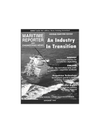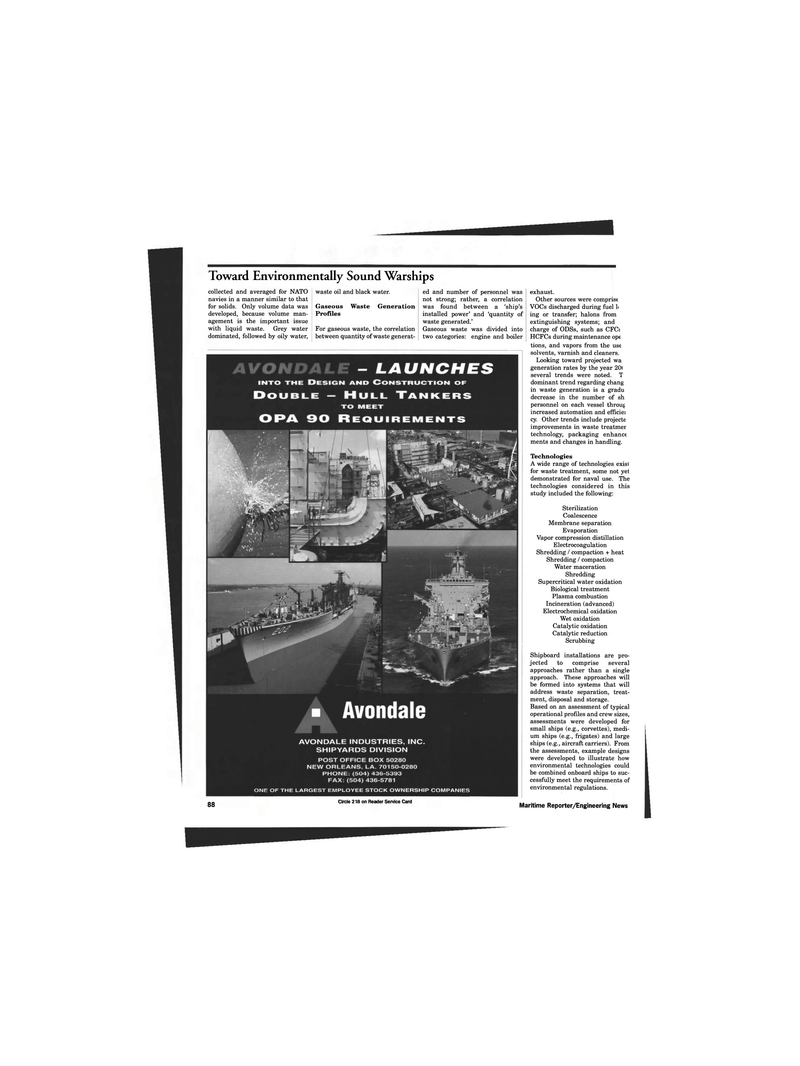
Page 88: of Maritime Reporter Magazine (September 1996)
Read this page in Pdf, Flash or Html5 edition of September 1996 Maritime Reporter Magazine
Toward Environmentally Sound Warships collected and averaged for NATO navies in a manner similar to that for solids. Only volume data was developed, because volume man- agement is the important issue with liquid waste. Grey water dominated, followed by oily water, waste oil and black water.
Gaseous
Profiles
Waste Generation
For gaseous waste, the correlation between quantity of waste generat- ed and number of personnel was not strong; rather, a correlation was found between a 'ship's installed power' and 'quantity of waste generated.'
Gaseous waste was divided into two categories: engine and boiler 88 Circle 218 on Reader Service Card exhaust.
Other sources were comprise
VOCs discharged during fuel li ing or transfer; halons from extinguishing systems; and charge of ODSs, such as CFCs
HCFCs during maintenance ope tions, and vapors from the use solvents, varnish and cleaners.
Looking toward projected wa generation rates by the year 20t several trends were noted. T dominant trend regarding chang in waste generation is a gradu decrease in the number of sh personnel on each vessel throu£ increased automation and efficiei cy. Other trends include projecte improvements in waste treatmer technology, packaging enhance ments and changes in handling.
Technologies
A wide range of technologies exisl for waste treatment, some not yet demonstrated for naval use. The technologies considered in this study included the following:
Sterilization
Coalescence
Membrane separation
Evaporation
Vapor compression distillation
Electrocoagulation
Shredding / compaction + heat
Shredding / compaction
Water maceration
Shredding
Supercritical water oxidation
Biological treatment
Plasma combustion
Incineration (advanced)
Electrochemical oxidation
Wet oxidation
Catalytic oxidation
Catalytic reduction
Scrubbing
Shipboard installations are pro- jected to comprise several approaches rather than a single approach. These approaches will be formed into systems that will address waste separation, treat- ment, disposal and storage.
Based on an assessment of typical operational profiles and crew sizes, assessments were developed for small ships (e.g., corvettes), medi- um ships (e.g., frigates) and large ships (e.g., aircraft carriers). From the assessments, example designs were developed to illustrate how environmental technologies could be combined onboard ships to suc- cessfully meet the requirements of environmental regulations.
Maritime Reporter/Engineering News

 87
87

 89
89
